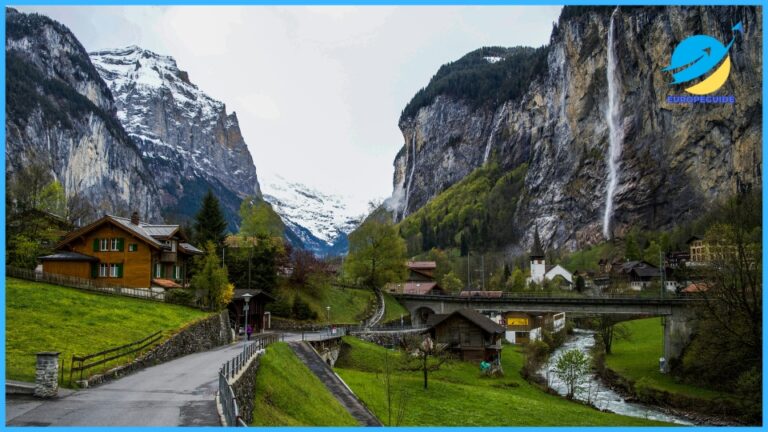Guide to Train Travel in Europe
Europe is known for its extensive and efficient train network, making it an ideal destination for travelers who want to explore the continent. Whether you’re planning a short trip or a multi-country adventure, train travel offers convenience, comfort, and stunning views along the way. In this guide, we’ll take a comprehensive look at everything you need to know about train travel in Europe.
Getting Started
Understanding the European Rail System
Europe’s rail network is vast and interconnected, covering almost every corner of the continent. It consists of high-speed trains, regional trains, and night trains, offering various options to suit different travel preferences and budgets.
Choosing the Right Rail Pass
For frequent travelers or those planning to visit multiple countries, a rail pass can be a cost-effective option. There are different types of passes available, such as Eurail Pass, Interrail Pass, and country-specific passes, each offering different benefits and coverage.
Planning Your Journey
Researching Routes and Schedules
Before embarking on your journey, it’s essential to research the available routes and train schedules. High-speed trains often require reservations, while regional trains offer more flexibility but may have slower travel times.
Booking Tickets
Tickets can be purchased online, at train stations, or through third-party websites. It’s advisable to book in advance, especially for popular routes and during peak travel seasons, to secure the best prices and seat options.
Onboard Experience
Comfort and Amenities
European trains are known for their comfort and amenities, with options ranging from standard seats to luxury cabins. Most trains offer onboard services such as dining cars, Wi-Fi, and entertainment options, making the journey enjoyable and convenient.
Traveling with Luggage
Each train has specific luggage policies, so it’s essential to check the guidelines before traveling. Generally, there are storage areas for larger luggage and overhead racks for smaller bags. It’s recommended to travel light and pack efficiently for ease of movement.
Tips for a Smooth Journey
Arriving Early
Arriving at the train station early allows ample time for check-in, security checks (if applicable), and boarding. This helps avoid last-minute rush and ensures a stress-free start to your journey.
Understanding Train Etiquette
Respect local customs and etiquette when traveling on trains in Europe. This includes keeping noise levels to a minimum, respecting other passengers’ space, and following any specific rules or regulations onboard.
Exploring European Destinations by Train
City-to-City Travel
Train travel in Europe offers the opportunity to explore multiple cities seamlessly. Whether it’s the bustling streets of Paris, the historic charm of Rome, or the scenic beauty of Switzerland, trains provide easy access to iconic destinations.
Off-the-Beaten-Path Adventures
Beyond major cities, European trains also connect to charming towns, picturesque countryside, and hidden gems waiting to be discovered. Consider adding lesser-known destinations to your itinerary for a unique and authentic experience.
Scenic Train Routes
Europe is home to some of the most breathtaking train routes in the world, offering panoramic views of mountains, lakes, and picturesque landscapes. Consider routes like the Glacier Express in Switzerland, the Flam Railway in Norway, or the West Highland Line in Scotland for unforgettable scenic journeys.
Cultural Immersion
Traveling by train allows you to immerse yourself in the local culture and lifestyle of each destination. Whether it’s sampling local cuisine onboard or interacting with fellow passengers, train travel offers unique opportunities to connect with the essence of Europe.
Sustainability and Eco-Friendly Travel
Environmental Benefits
Train travel is a more sustainable option compared to other modes of transportation, as it produces fewer carbon emissions per passenger kilometer. Choosing trains over cars or planes helps reduce your carbon footprint and contributes to environmental conservation efforts.
Supporting Local Economies
By opting for train travel, you’re also supporting local economies along your journey. Train stations are often located in the heart of cities and towns, providing direct access to local businesses, restaurants, and attractions, contributing to the economic growth of these communities.
Safety and Security
Safety Measures
European trains adhere to strict safety standards, making them a secure mode of transportation. However, it’s essential to be vigilant of your belongings and surroundings, especially in crowded areas and tourist spots, to avoid any potential risks.
Train travel in Europe offers a unique blend of convenience, comfort, and adventure, allowing you to explore the continent at your own pace. Whether you’re drawn to the scenic beauty of the countryside, the vibrant culture of bustling cities, or the charm of off-the-beaten-path destinations, the European rail network provides endless opportunities for memorable experiences.







